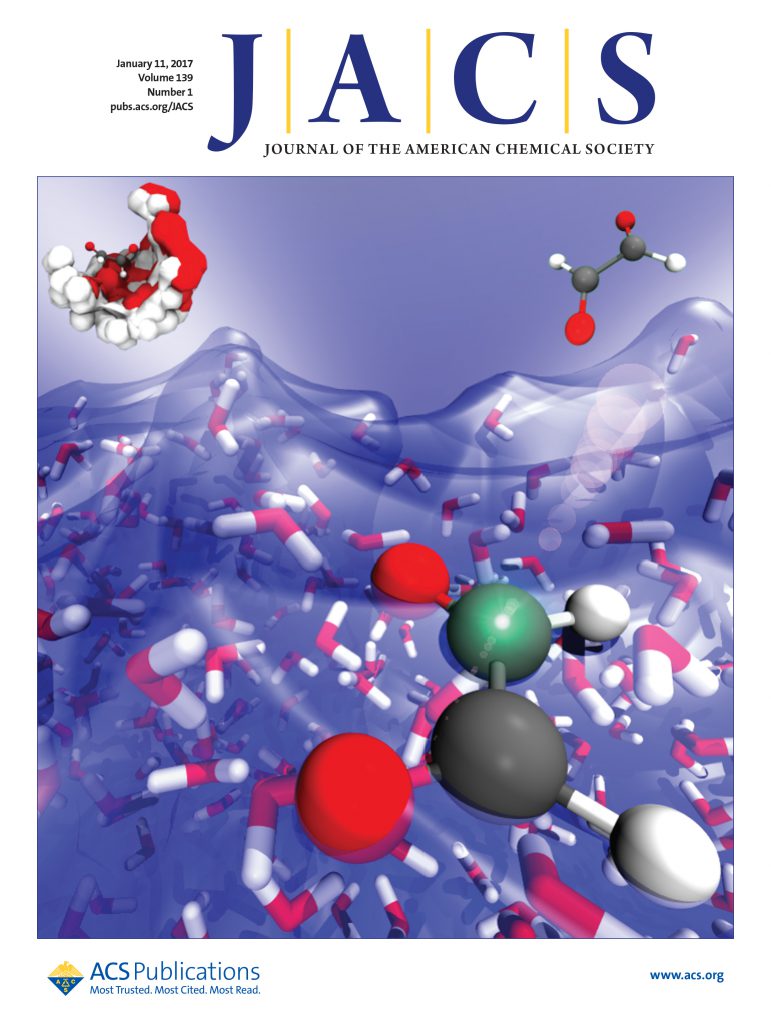Bright and Ultralong Organic Phosphorescence via Sulfonic Acid Functionalization for High-Contrast Real-Time Light-Writing Display
IF 14.4
1区 化学
Q1 CHEMISTRY, MULTIDISCIPLINARY
引用次数: 0
Abstract
It is challenging to achieve room-temperature phosphorescence (RTP) in pure organics with both high efficiency and long lifetime. While much effort has been placed on discovering efficient phosphor skeletons, the importance of phosphor functionalization in enhancing the RTP performance has not received adequate attention. Herein, we demonstrate that functionalization of phosphors with sulfonic acid can ensure both bright and ultralong RTP, outperforming other substituents. The unique trigonal pyramidal structure of sulfonic acid group allows for more effective (n, π*) transitions to enhance intersystem crossing efficiency. Its highly polarized S–O bonds render strengthened hydrogen bonding interactions and a narrower confinement within the poly(vinyl alcohol) (PVA) matrix, to minimize the nonradiative dissipation. Furthermore, its excellent water solubility contributes to the outstanding transparency of PVA film (over 97%), yielding high-quality optical imaging with a high contrast ratio of 48.0 and a low blurriness of 0.24. Moreover, full-color phosphorescence with exceptional performance (ΦP, max = 37.2%, τP, max = 2.09 s) is achieved from different sulfonic acids, validating the effectiveness and universality of this strategy. By leveraging these advantages, real-time light-writing displays with sharp imaging, high sensitivity, and exceptional rewritability are demonstrated. This work not only contributes to the substituent engineering in the molecular design of phosphors but also opens new opportunities for RTP materials in the next-generation intelligent optoelectronic materials.

求助全文
约1分钟内获得全文
求助全文
来源期刊
CiteScore
24.40
自引率
6.00%
发文量
2398
审稿时长
1.6 months
期刊介绍:
The flagship journal of the American Chemical Society, known as the Journal of the American Chemical Society (JACS), has been a prestigious publication since its establishment in 1879. It holds a preeminent position in the field of chemistry and related interdisciplinary sciences. JACS is committed to disseminating cutting-edge research papers, covering a wide range of topics, and encompasses approximately 19,000 pages of Articles, Communications, and Perspectives annually. With a weekly publication frequency, JACS plays a vital role in advancing the field of chemistry by providing essential research.

 求助内容:
求助内容: 应助结果提醒方式:
应助结果提醒方式:


